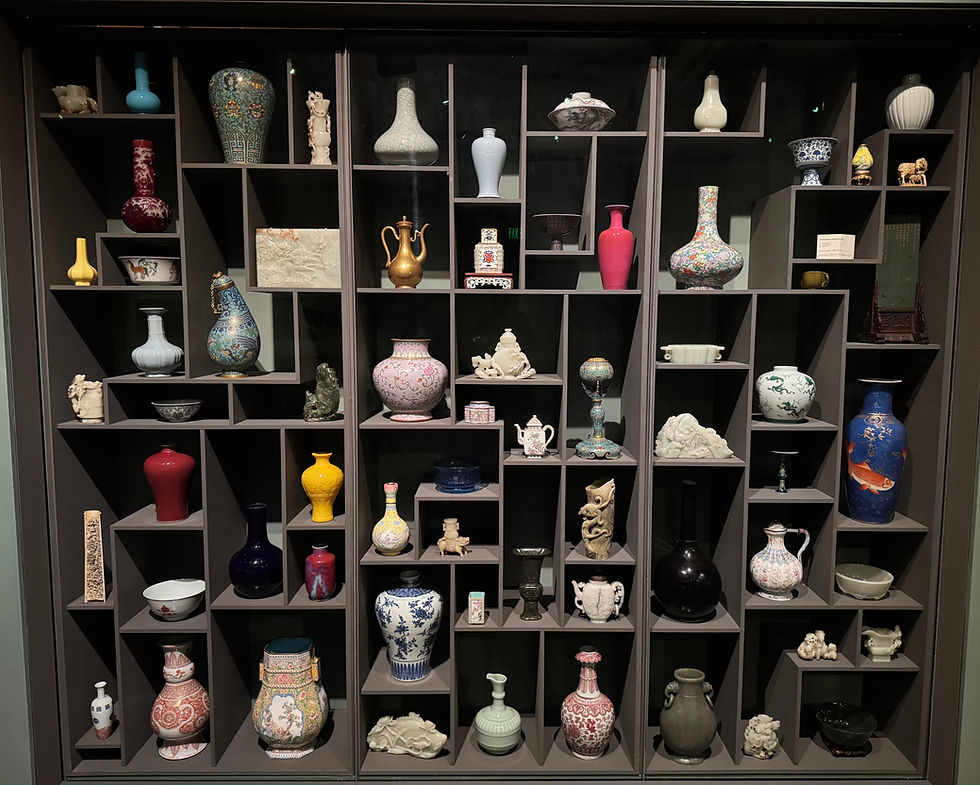Age of Empires at the Met Museum, NYC
- Anthony Wu

- May 22, 2017
- 3 min read
New York is fun! Especially if you are like me and enjoy visiting all various Asian Art museums around the city. I missed out on all the new museum exhibitions during my March Asia Week adventure, but made up for it over the past couple of days.
I was in NYC primarily for meetings - but fortunately had various pockets of free time. Friday afternoon was spent in the Chelsea area where I brushed up on my Buddhist works of art at Tibet House USA and the Rubin Museum. They have some of the best collections of Himalayan sculptures, religious paintings, and Buddhist ritual objects in the city. (Remind me to put a blog into the future featuring some of the highlights of my visit.)
On Saturday I was at the Metropolitan Museum of Art (the Met). After a 'quick 2 hour refresher' of the Chinese art galleries - with many items on rotation I haven't seen in years - I made my way to their well-publicized exhibition 'Age of Empires: Chinese Art of the Qin and Han Dynasties (221 BC - 220 AD)'.
This was an incredible show and some of the pieces just took my breath away. It is very seldom to see the top Chinese archaeological museums/sites loan their treasures to North America, but in this show, over 160 high-quality artifacts were respresented.
The exhibit showcases two major dynasties in Chinese history that laid significant foundations for China over the next 2000 years. The Qin Dynasty (221-206 BC), albeit brief, featured Qin Shi Huangdi (259-210 BC), the emperor most famous for unifying China and being entombed with a massive terracotta army - some of his soldiers were featured in the exhibition.
The Han Dynasty (206 BC-220 AD) lasted over 400 years and at its peak, was known to have a strong centralized government, a flourishing economy, advance trade routes to the West, and a great appreciation for culture. Representing the Han culture are impressive sculptures and vessels.
I can't fit all of my highlight photos into this blog, but here is a small sample as to what a great exhibition this was. All of these figures were for funerary purposes - the deceased is hoping that these attendants, soldiers and symbols of wealth will accompany them into the afterlife.
1. Earthenware Kneeling Archer, Qin Dynasty (221–206 BC)
One of the highlights of the show and used for many of their promotional material, this life-size soldier has amazing details in its pose, face and armour.

2. Two Earthenware Soldiers and a Horse, Qin Dynasty (221–206 B.C.)

3. Earthenware Strongman, Qin Dynasty (221–206 BC)
One of my favourite figures from the exhibition, he was probably the 'strongman' of a two person acrobatic duo. A highly unusual figure with detailed anatomy.

4. Large Bronze Horse and Groom, Han Dynasty (206 BC-220 AD)

4. Group of Earthenware Charioteers, Han Dynasty (206 BC-220 AD)
These figures are extremely unique and you can tell that there are three different variations - some are standing, while the other are seated with or without hoods.

5. Earthenware Female Dancer, Western Han Dynasty (206 BC-9 AD)
Stunning in her composition and graceful in mid-movement. It was a real pleasure to see one of these figures in person.

6. Gilt Bronze Rhinoceros and Groom, Western Han Dynasty (206 BC-9 AD)
Luxurious subject matter of one of the few remaining rhinos left in China (or one that was imported from overseas). The anatomy is accurate and extremely detailed. The rhino was also on the front cover of the March/April issue of Orientations Magazine, where you can find my summary of the Fall 2016 Chinese Art auction trends.

Detail of the grumpy-looking groom

7. Bronze and Earthenware 'Money Tree, Western Han Dynasty (206 BC-9 AD)
This tree will hopefully bequeath the deceased with years and years of endless precious coins. The tree itself is perched on a mythical beast called a bixie, a one horned creature that is thought to draw in wealth.

8. Jade Funerary Suit, Western Han Dynasty (206 BC-9 AD)
Only a few excavated examples of these suits have been found. They are extremely labour intensive and expensive to produce, so they were afforded strictly for members of the noble class. The purpose of these suits was to keep the integrity of the decease's body into the afterlife.





Comments